Discovering the Temples & Shrines of Metoba – Part One: Rinsho-ji
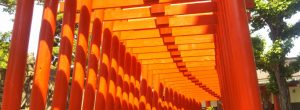
— Note: This post was originally written as a stand-alone piece on exploring Matsumoto’s back streets. Following my own advice I returned to the area to poke around some more – and made a few new and excellent discoveries. This post is now Part One of a series on the Temples and Shrines of Metoba. —
Another visitor to Matsumoto recently asked me what she could do after visiting the castle. I told her what I tell everyone who asks me that question: check out Nawate-dori, walk down Nakamachi Street, and go take a peek inside Hyakuchikutei, the old tea house hidden in a small garden just north of the castle. Or go to one of the museums in town. Or, if there was time, take the train out to Hotaka and visit the Daio Wasabi Farm.
If the person seems particularly ambitious I like to suggest renting a bicycle and taking off. Make a circuit of the freshwater springs around town. Swing by Agata-no-mori Park. Cruise along the Susuki River or go clear out to the 1600-year-old burial mound on top of Kobo-yama, southeast of downtown Matsumoto.
Now, thanks to my ability to get lost when I’m riding my own bike, I have a new suggestion.

I’d biked through the neighborhood called Metoba a few hundred times before I knew there was a neighborhood called Metoba. Not because I am a foreigner, but because this is Japan, where only two types of people know what neighborhoods exist and where they are: mailmen and the municipal employees whose job it is to put those little metal indicator signs on all the telephone poles. Half the people who live in Metoba don’t even know they live in Metoba.

Metoba, then, isn’t known as a sightseeing magnet. It exists in anonymity between the castle downtown and the allures to the east: the hot springs of Asama Onsen, the winery up in Yamabe, and my coffee maker for example. This is my excuse for not knowing anything about the area until a couple of weeks ago.
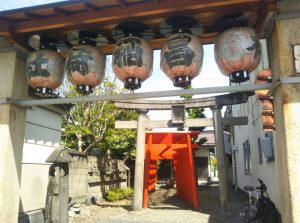
I don’t even remember where I was going. To the supermarket maybe, or the library. The only thing I can say for certain is that I was rolling down a narrow lane I’d never cycled down before when I found myself on the modest grounds of the Shoichii Rinsho Inari Daimyo-jinja. (Big name for such a small place, I know, but here we are.)
I actually came to it from behind, down that skinny break in the concrete there on the right. One second I’m an inch from slamming my handlebars into a drainpipe, the next second I’m sideswiping a row of bright orange Shinto gates, a small-scale version of the famed Fushimi-Inari Shrine just south of Kyoto.
I’ll admit, after a while in Japan a person can grow numb to the sight of yet another shrine. But that person has never been me. That’s not to say each new shrine sighting amounts to a brand new case of euphoria. But it’s interesting: in Japan, land of almost pathological uniformity, no two shrines are alike.
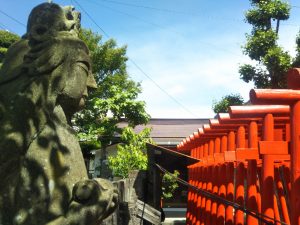
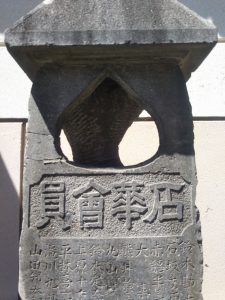
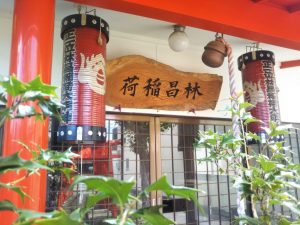
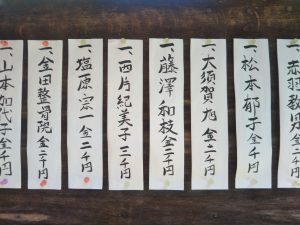
The basics may always be there, but the details always differ. For me, that makes stopping worthwhile.
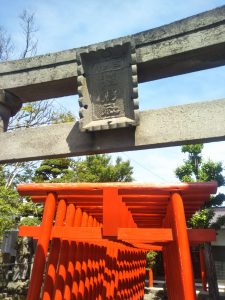
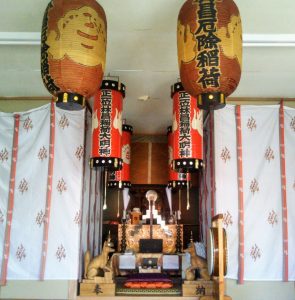
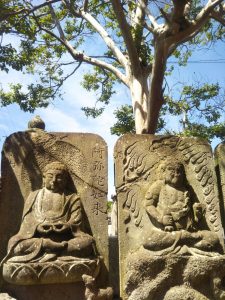
And while this particular shrine, tucked in among the predominantly bland modern townscape along a nondescript side road, may not impress to the degree that Fushimi-Inari does, it does stand as quiet evidence of the persistence of tradition, and the value of such in the eyes of a community.
It also represents a glaring peculiarity of Japanese religious practice. Right next door to this Shinto shrine – part of it, actually, as it shares the same name – is Rinshoji Temple. To the extent the Japanese engage in religious practice, they generally split their time between the two. “Eighty percent of Japanese are Shinto, and eighty percent are Buddhist,” the saying goes. No harm in covering your bases, I guess.
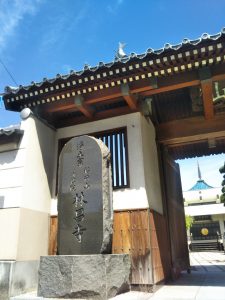
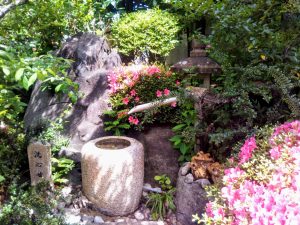
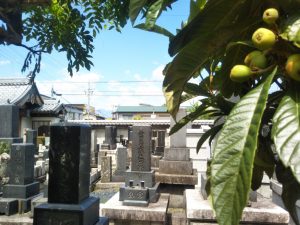
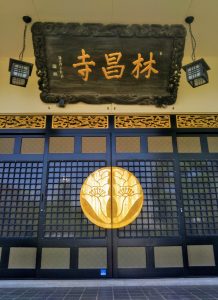
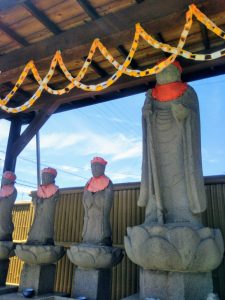
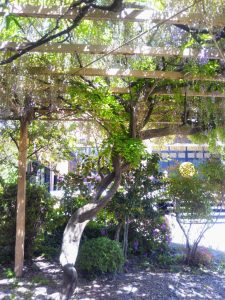
I spent about twenty minutes stepping easily, quietly, taking in the spiritual details around me. The carved stone; the perfect symmetry of the cut wood; the gardens that are somehow both sculpted and natural; the accoutrements of conversing with the gods; the shimmering gold of the altars and the pale colors of the time-beaten lanterns; these things can make one feel so far from home, yet feel like this is exactly where one should be this very moment.
Every few minutes a lone car would pass by on the street. It wasn’t until I was ready to get back on my bicycle and ride away when two people came walking through, on their way somewhere else. One of them had lived in Matsumoto her whole life. The other had moved to the neighborhood about six months prior. Neither of them knew this place even existed until a couple of weeks ago.
“There’s a really cool temple a hundred yards further up the street,” they told me. They’d stumbled upon it the same day they first saw this shrine, on a sunny day much like this one, during a meandering and aimless stroll. “Makes me wonder what else we’re missing,” the guy said, noting that his impending move to Osaka was quickly turning bittersweet.
I wished them well and rolled on up the street, in search of Part Two of my Metoba Discovery Tour.
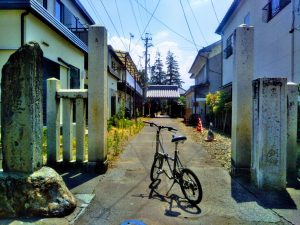
[googlemaps https://www.google.com/maps/embed?pb=!1m14!1m8!1m3!1d1609.019140388009!2d137.9764461781908!3d36.23856404180532!3m2!1i1024!2i768!4f13.1!3m3!1m2!1s0x601d0e974b4b0001%3A0xab9b4c95ddfae689!2z5p6X5piM56iy6I2356S-!5e0!3m2!1sen!2sjp!4v1560560185089!5m2!1sen!2sjp&w=600&h=450]